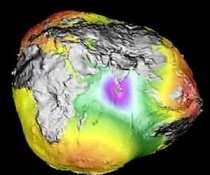wiltw
Subscriber
Initially, I wasn't suggesting anything, but I was curious as to why the system we know was settled on. At the time, lenses were designated with focal lengths in millimeters, centimeters, and inches. Why mm, and why not cm or inches? And with (at the time) there being 3 different designations (or more), why didn't they just abandon the FL, and not go with AoV. That has been answered earlier.
But now that I've been thinking about it, IMO, it would make more sense to use AoV (for the format the lens was intended to be used on), and it would be easier for a layman to have an understanding of what each lens will give them in their final image (as supported by the statement above).
But I'm happy to continue with the old (current) system, although I liken it to using cubits to determine fuel economy when all (standard) distance measurements are in miles or kilometers - 'My car gets 88,000 cubits per gallon!' (that's 25mpg if you're wondering.
Everything changes over time. Some will be accepting of a change, others will fight it tooth and nail. Such is life....
FL is one of the only parameters which is not 'dependent upon the format size it is used on'...it is solely determinant on the rear node location of the design, and the distance of that lens' rear node to the focal plane.
Some folks have been talking about 'Angle of View'...unfortunately, there is the not-associated-to-format Angle of View, and then there is the AOV which is DEPENDENT upon the size of the format it is covering! The first simply states that at the FL distance, the lens will produce an IMAGE CIRCLE of a certain size; the second states, when that FL is used with a frame of certain dimensions, that frame will capture a certain angular distance.
Lets use a Schneider large format lens information sheet to illustrate...

Let's concentrate on the Schneider 5.6/90 XL for this discussion...
- Notice that it has an 96 degree Angle of View measurement, which is the one which is associated with the Image Circle diameter. Just as the Image Circle is what limits the EF-S lens from use on FF bodies, this lens can cover a 5" x 7" film frame, but not with an 8" x 10" film frame.
- Notice also, there are TWO Angle of View measurements, the 96 degree one for 'wide open aperture' and the 101 degree one at f/22...this illustrates the fact that the Image Circle diameter does get larger at smaller apertures! Hypothetically, while a lens might not satisfactorily cover 5x7 format at f/5.6, it might be able to do so at f/22. The 5x7 film diagonal is about 217mm, so while the wide open Image Circle is too small at 201mm diameter, it increases to 259mm diameter at f/22...that probably would work!
Now let us take the same 90mm lens and use it on different format sizes...
- If we mounted a 90mm FL on 135 format, at a subject distance of 9' that subject would fill 100% of the 24mm frame height of the 135 format frame, and the subject would be 24mm on the focal plane and the image fills 27 degree AOV.
- If we mounted a 90mm FL on 645 format, at a subject distance of 9' that subject would fill 56% of the 43mm frame height of the 645 format frame, and the subject would be 24mm on the focal plane and the image fills 45 degree AOV.
- If we mounted a 90mm FL on 4x5 format, at a subject distance of 9' that subject would fill 26% of the 94mm frame height of the 4x5 format frame, and the subject would be 24mm on the focal plane and the image fills 84 degree AOV.
- If we mounted a 90mm FL on 5x7 format, at a subject distance of 9' that subject would fill 19% of the 125mm frame height of the 5x7 format frame, and the subject would be 24mm on the focal plane and the image fills 101 degree AOV.
So the ONLY thing which 'never changes' is the FL!
And notice that that 9' subject is the same size on all of the formats, in terms of its size on the film plane. That is because the FL is 90mm for all uses, rendering the 9' subject to be 24mm tall on the film plane, regardless of film format.
Last edited by a moderator:













 But seriously, talking about an "ordinary person" artificially limits the scope of the discussion to a small slice of imaging optical design. The question is if aspect ratio is important to lens designers outside of photography lenses. My answer -- as a lens designer -- is that it is. Hence my disagreement.
But seriously, talking about an "ordinary person" artificially limits the scope of the discussion to a small slice of imaging optical design. The question is if aspect ratio is important to lens designers outside of photography lenses. My answer -- as a lens designer -- is that it is. Hence my disagreement. 